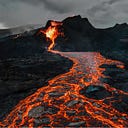Member-only story
THE SUN
The sun is an ordinary star, one of about 100 billion in our galaxy, the Milky Way. The sun has extremely important influences on our planet: It drives weather, ocean currents, seasons, and climate, and makes plant life possible through photosynthesis.
The sun is an ordinary star, one of about 100 billion in our galaxy, the Milky Way. The sun has extremely important influences on our planet: It drives weather, ocean currents, seasons, and climate, and makes plant life possible through photosynthesis. Without the sun’s heat and light, life on Earth would not exist.
About 4.5 billion years ago, the sun began to take shape from a molecular cloud that was mainly composed of hydrogen and helium. A nearby supernova emitted a shockwave, which came in contact with the molecular cloud and energized it. The molecular cloud began to compress, and some regions of gas collapsed under their own gravitational pull. As one of these regions collapsed, it also began to rotate and heat up from increasing pressure. Much of the hydrogen and helium remained in the center of this hot, rotating mass. Eventually, the gases heated up enough to begin nuclear fusion, and became the sun in our solar system.
Other parts of the molecular cloud cooled into a disc around the brand-new sun and became planets, asteroids, comets, and other bodies in our solar system.
